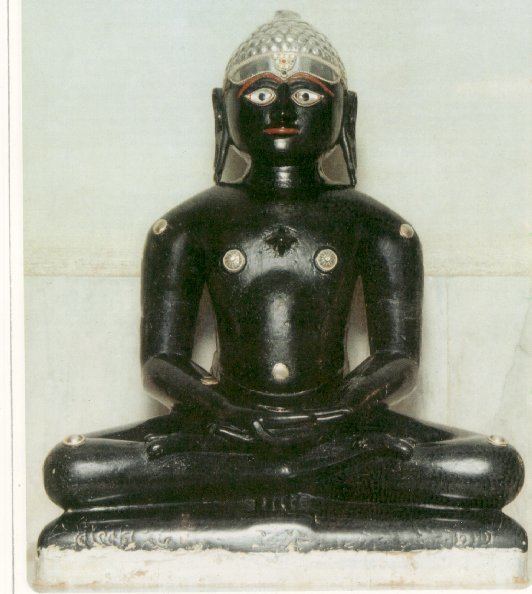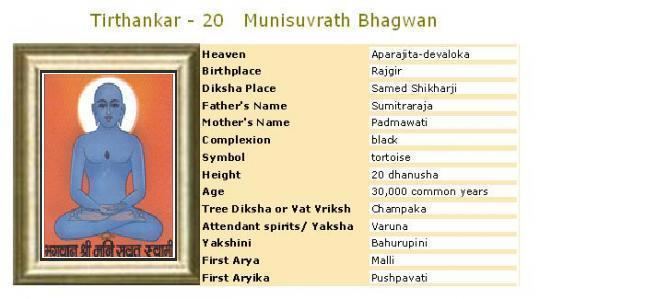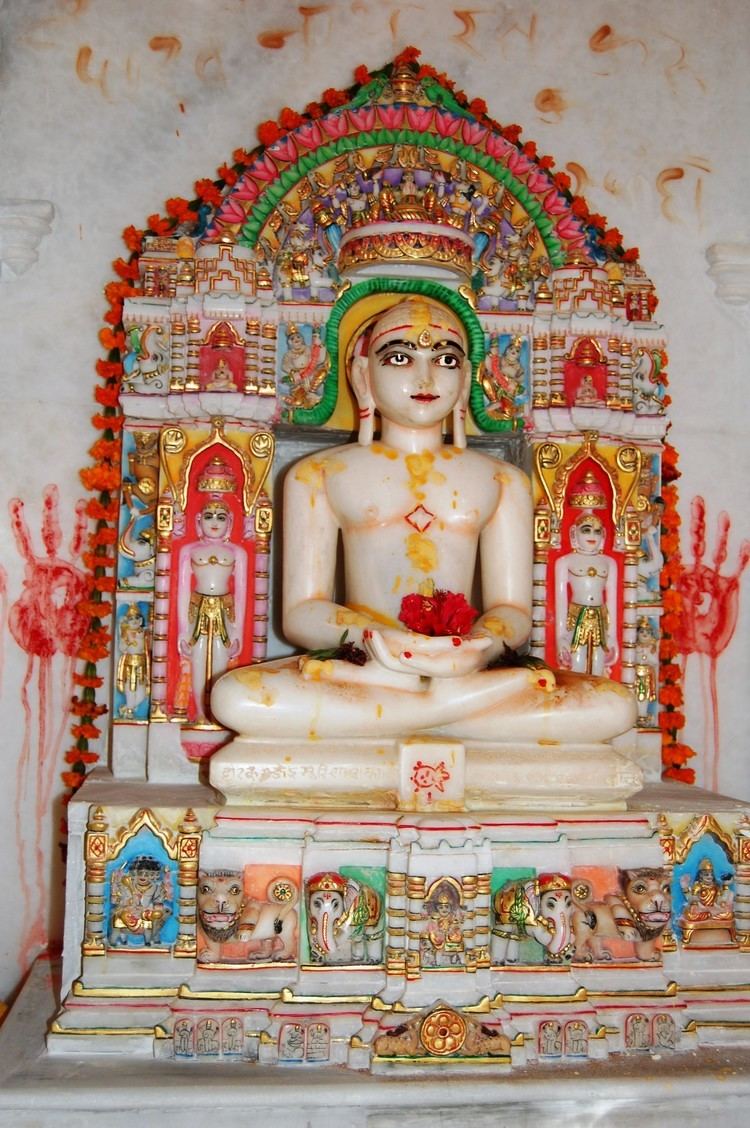Age over 30,000 years Preceded by Māllīnātha | Height 20 bows (60 metres) | |
 | ||
Parents Sumitra (father)Padmavati (mother) | ||
Munisuvrata Swami (Munisuvratanātha) (मुनिसुव्रत स्वामी) was the twentieth Tirthankara of the present half time cycle (avasarpini) in Jain cosmology. He became a siddha, a liberated soul which has destroyed all of his karma. Events of the Jaina version of Ramayana are placed at the time of Munisuvratanatha. His chief apostle (gañadhara) was sage Malli Svāmi.
Contents

Legends
Munisuvratanatha was the twentieth Tirthankara of the present half time cycle (avasarpini) in Jain cosmology.
According to Jain texts, Munisuvratanātha was born as 34 lakh plus 25,000 years passed after the birth of the nineteenth Tirthankara, Mallinātha. According to Jain beliefs, Munisuvratanātha descended from the heaven called Ānata kalpa on the twelfth day of the bright half of the month of Āśvina – āśvina śukla dvādaśi– to Queen Padmā and King Sumitra.
In his previous incarnation, Munisuvrata was born as Surshreshta, the king of Champa, Mahavideh.

On the third day of Shraavana (month) Krishna (dark fortnight) according to Hindu calendar, Queen Padmavati of Rajgir saw sixteen auspicious dreams. When she shared her dreams with her husband, King Sumitra of the Harivamsa clan, he explained that a Tirthankara will be born to them soon. Then, Munisuvrata was born to them on the fifteenth day of the Shraavana Shukla (bright fortnight) in 1,184,980 BC.
According to Jain texts, after spending 7,500 years as youth (kumārkāla), Munisuvratanātha ruled His kingdom for 15,000 years (rājyakāla). He then renounced all worldly pursuits and became a monk. According to Jain beliefs, Munisuvratanātha spent 11 months (chadmasthakāla) performing karma-destroying austerities and then attained the all-embracing knowledge – Omniscience (kevala jñāna).
His height was 20 bows (60 metres).
Munisuvratanātha is said to have lived for over 30,000 years and attained liberation (nirvāña) from Sammeda śikhara on the twelfth day of the dark half of the month of Phālguna – phālguna kṛṣna dvādaśi.
Adoration
Svayambhustotra by Acharya Samantabhadra is the adoration of twenty-four tirthankaras. Its five slokas (aphorisms) adore the qualities of Munisuvratanātha.
O Lord Munisuvratanātha! You had attained the excellent observance of the vows of the sages; you are the ascetic supreme, and utterly pristine (having destroyed the inimical karmas). You stood out in the assembly of the sages like the moon in the midst of the constellations of stars.
Literature
Events of the Jaina version of Ramayana are placed at the time of Munisuvratanatha.
